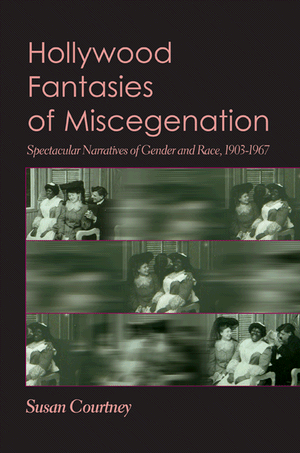Picturizing Race: Hollywood’s Censorship of Miscegenation and Production of Racial Visibility through “Imitation of Life”Posted in Articles, Literary/Artistic Criticism, Live Events, United States on 2010-10-25 22:20Z by Steven |
Genders: Presenting Innovative Work in the Arts, Humanities and Social Theories
Issue 27 (1998)
Susan Courtney, Associate Professor of English and Film Studies
University of South Carolina
“A Case Very Near the Borderline”
Hollywood’s Production Code explicitly banned “miscegenation” from the American screen for nearly thirty years. The files of the Production Code Administration (PCA) which document the interpretation of that ban, however, demonstrate the PCA censors’ utter confusion as to the meaning of the miscegenation clause they were charged to enforce. That confusion is nowhere more apparent than in the PCA’s file on Imitation of Life (1934), a project the PCA originally rejected on the grounds that it “violate[d] the Code clause covering miscegenation, in spirit, if not in fact.” What is strikingly odd about the PCA’s original ruling in this case, however, is that while the clause of the Code that forbade miscegenation defined it as a “sex relationship between the white and black races,” no such “sex relationship” was “in fact” at issue in Imitation of Life. Indeed, like Fannie Hurst’s best-selling novel on which the script was based, the melodrama was far more concerned with relationships among black and white women than with any heterosexual relationships. Specifically, the film’s plot follows the rise to fortune of a white widow on the profits of her black maid’s pancake recipe, and is primarily centered around the relationships among these two single mothers, Bea Pullman and Delilah, and their respective daughters, Jessie and Peola. While the film shows us no heterosexual “sex relationship” between whites and blacks, the considerable extent to which Bea and Delilah function as a couple might invite us to read the relationship between these women as a “sex relationship” of its own. Delilah cooks, cleans and rears Bea’s child during the day and rubs her feet at night—the latter prompting Bea to sigh with pleasure while Delilah lectures her about the joys of passion Bea has yet to find with a man: “You need some loving honey child!” Yet as significant as Bea and Delilah’s relationship is to an understanding of the film, a reading of it as “miscegenation” seems to have been well beyond the sensibilities of the PCA censors who, in my experience, never considered “sex relationship” in anything but the most decidedly heterosexual of terms. Nevertheless, in a letter to Universal that supported (without clarifying) PCA Director Joe Breen’s nebulous interpretation of miscegenation, Will Hays, Breen’s boss, expressed the PCA’s “considerable worry” on the subject and urged the studio to drop the project, lest it “develop into a case very near the borderline.”…
Read the entire article here.
